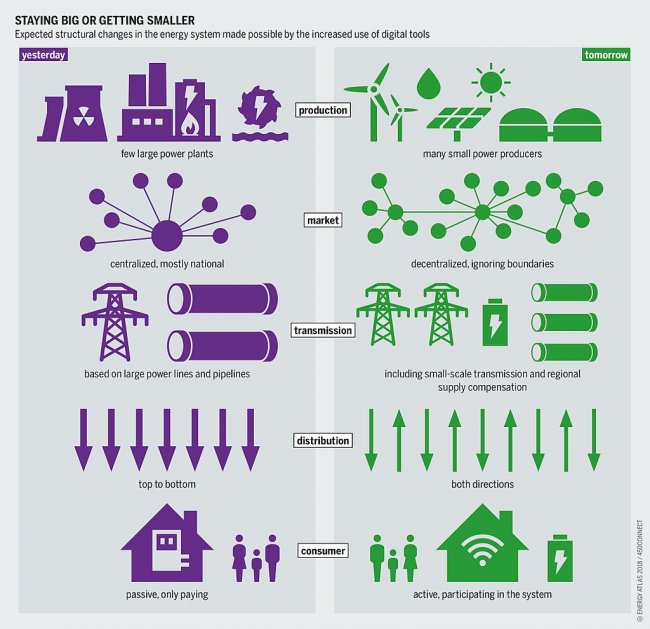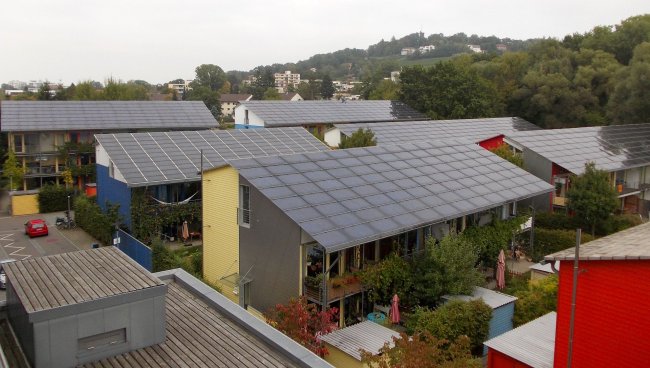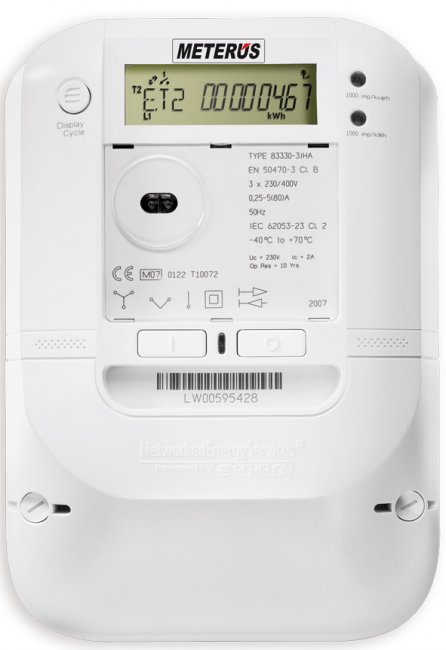Smart Grid, Smart Grid, Smart Grid
A smart grid is an intelligent electricity network in which there is a connection between all participants in the energy market, aimed at providing energy services, reducing costs and increasing efficiency, as well as integrating distributed energy sources, including renewable energy sources.
These are electrical and communication networks that allow for real-time regulation of electricity production and consumption, both locally and globally. Their principle is an interactive two-way communication between production sources and devices or consumers about the current possibilities of energy production and consumption.
Another definition: Smart grids are power systems that use information and control technologies, distributed data processing, and associated sensors and controls to integrate the behavior and actions of consumers and other stakeholders and to effectively provide sustainable, economical, and reliable power supply... .
As the share of renewable energy sources in the electricity grid increases, so does the demand, especially for low-voltage grids. Low-voltage grids no longer only perform the task of receiving and distributing electricity from the distribution grids, but increasingly perform the task of feeding decentralized generated electricity back to the distribution grids.
The invasion of renewable energy sources in the energy landscape has significantly changed the flow of energy in the grid: now consumers not only consume, but also produce electricity through the same grid. Therefore, the flow of energy is now two-way.
The smart grid sends electricity from suppliers to consumers using two-way digital technology to manage consumer demand. This helps save energy, reduce costs, improve usability and transparency.
However, privacy and security experts warn of the surveillance potential and vulnerability of this technology, which could also be exploited by thieves. In addition, synchronizing customers with price can destabilize the network.
The use of photovoltaic solar energy in the ecologically clean area Solarsiedlung, in Vauban (Freiburg, Germany).
Characteristics of smart grids:
- Full automation. It includes a digital monitoring and control system, built-in sensors that monitor network behavior, and automatic failover. Ensures availability of real-time information on network load, power quality, outages, etc.
- Full customer integration. Its essence is to provide consumers with digital meters with a two-way flow of information in real time, which makes it possible to create price tariffs in accordance with the current situation in the network (the so-called "Smart electricity meters"). This allows customers to efficiently manage consumption, such as heating water, washing or charging batteries.
- Adaptation to different ways of producing electricity. The development of smart grids mainly begins at the time when smaller sources of electricity start to connect to the distribution system, whose behavior is difficult to predict. For example, solar and wind power plants, gas microturbines and other decentralized electricity generation technologies that allow users to generate electricity from their own resources and sell the excess to the grid. The power of sunlight or wind is very difficult to predict wherever these decentralized sources are located. Since smart grids regularly send information about electricity consumption, it is possible to regulate power, for example in power plants using conventional fuels.
Conventional power grids usually already use information and control technology to some extent. In the smart grid, these technologies are further developed.
The main change at the end-user level is the installation of smart meters. Their main tasks are remote data reading and the ability to bill prices that change over time.
Smart electricity meter
Smart meters are electricity meters that record electricity consumption at intervals of 1 hour or less and transmit this information at least once a day to the energy company for monitoring and control purposes.
Smart meters provide two-way communication between the meter and the central system.
The transfer of data between the individual components of the network is done by telephone modem, GSM, ADSL connections or other methods. This allows the development of more differentiated tariffs and therefore more favorable price incentives for domestic consumers (intelligent market).
Unlike home energy monitoring systems, smart meters can collect data for remote reading.
The user can realize economic advantages without sacrificing convenience, only if there are also devices that work automatically, preferably during low tariffs. These are processes that are not time critical, such as charging electric vehicles, running heat pumps, freezing, heating (electric boilers) or washing dishes.
For example, for the electricity user, this technology ensures that the electric vehicle is charged exactly when there is good access to cheap renewable energy. In this way, wind energy can be better used during hours when strong winds are blowing.
Another example is control systems that automatically help industries shut down low-priority production processes when electricity prices are temporarily high.
With night storage heaters and fixed night tariffs, this was already implemented decades ago, but modern systems can operate more flexibly and intelligently, which is particularly important for the inclusion of renewable energy sources.
IT security
One of the main problems of smart grids is cyber attacks. The idea, concept and topology of smart grids are based on IT solutions that carry a certain threat. Smart grids depend on many computers, computer networks, software and communication technologies for their operation and effective control.
Unauthorized interference with this cybercriminal's IT infrastructure can result in huge losses, directly and indirectly, due to the lack of power to specific recipients.
The complexity of the network means there are gaps yet to be identified. Therefore, it is difficult to assess the risk associated with a potential attack due to the size, complexity, and dynamic nature of the power system, as well as the unpredictability of potential attackers.



